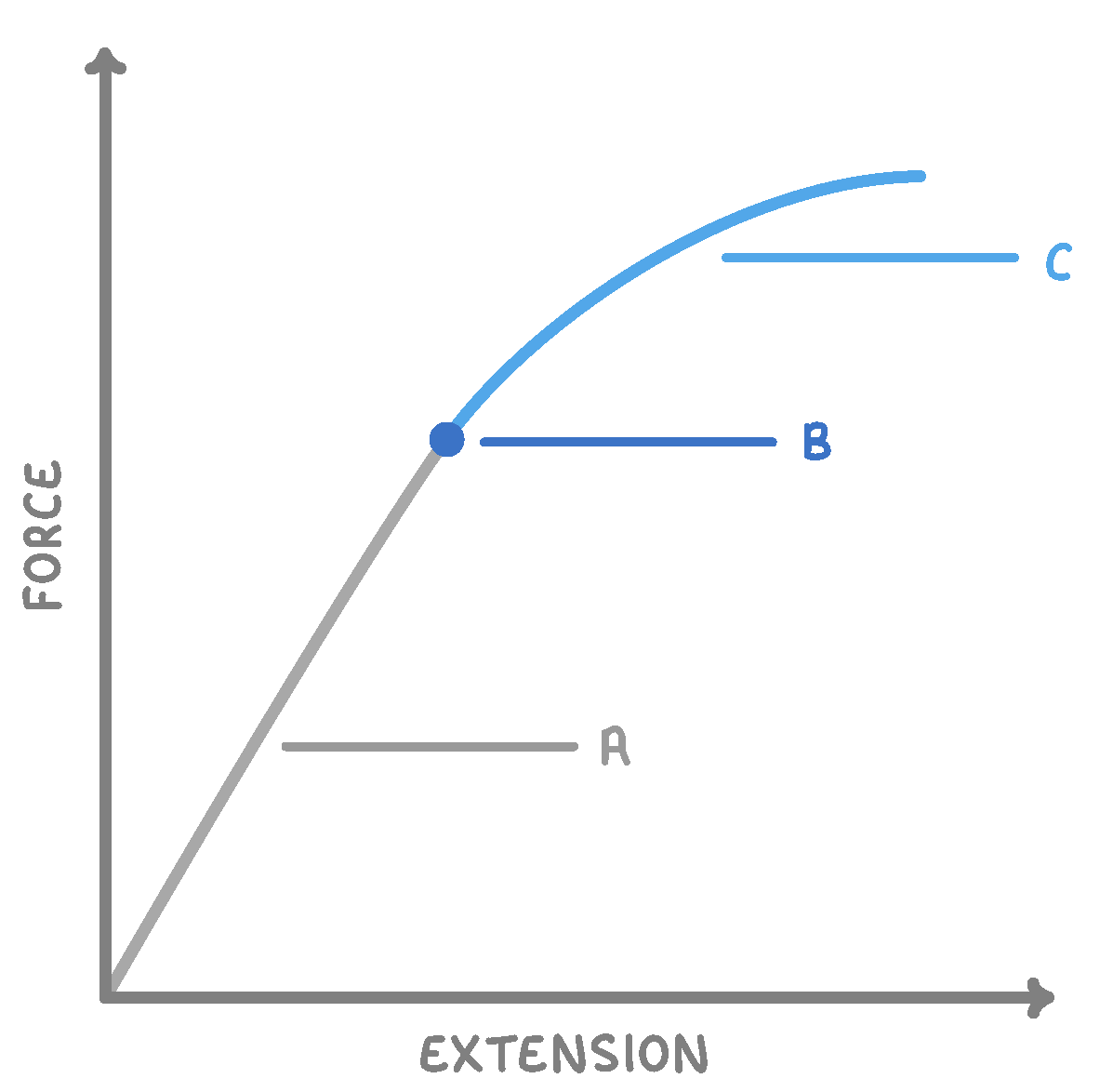Forces & Elasticity
This lesson covers:
- The idea that materials can be deformed by compressing, stretching, or bending them
- The difference between 'elastic' and 'inelastic' deformation
- The meaning of the term 'spring constant'
- The relationship between 'force', and 'extension', known as Hooke's law:
- The force versus extension graph
The term 'deformation' refers to a change in the shape of an object as a result of forces being applied to it.
If an object does return to its original shape after the forces have been removed, it is known as deformation.
On the other hand, if an object does not return to its original shape after the forces have been removed, it is known as deformation (or sometimes plastic deformation).
|
Applying forces to an object can cause it to:
(Select all that apply)
Compress
Stretch
Bend
Cool down
|
is the increase in length of a spring when its stretched. Be aware that it can also refer to a decrease in length, if the spring is compressed.
|
What is the minimum number of forces required to stretch, compress, or bend an object?
One
Two
|
An object's is a measure of how many Newtons of force it would require to stretch (or compress) the object by 1 metre. It has the units N/m.
You can think of it as a measure of how stiff the object is. Objects with a higher spring constant are more stiff, so they require force to stretch.
|
Which object do you think has the higher spring constant?
A bungee cord
A plank of wood
|
Hooke's Law states that the extension of an object is directly proportional to the force applied.
It can be described by the formula:
Where is the force applied to the spring, is the spring constant, and is the extension.
If you stretch an object too much it can pass its 'elastic limit' (also known as the 'limit of proportionality').
At this point what will happen to the object?
It will break
It will start deforming inelastically
It will melt
|
The graph below shows the relationship between force and extension, for a spring.  |
What sort of deformation occurs in the area of the graph indicated by the letter A? Elastic deformation Inelastic deformation
|
Which two names do we use for the point on the graph indicated by the letter B? The elastic limit The inelastic limit The limit of proportionality
|
What sort of deformation occurs in the area of the graph indicated by the letter C? Elastic deformation Inelastic deformation
|
|
Hooke's Law is the formula:
|